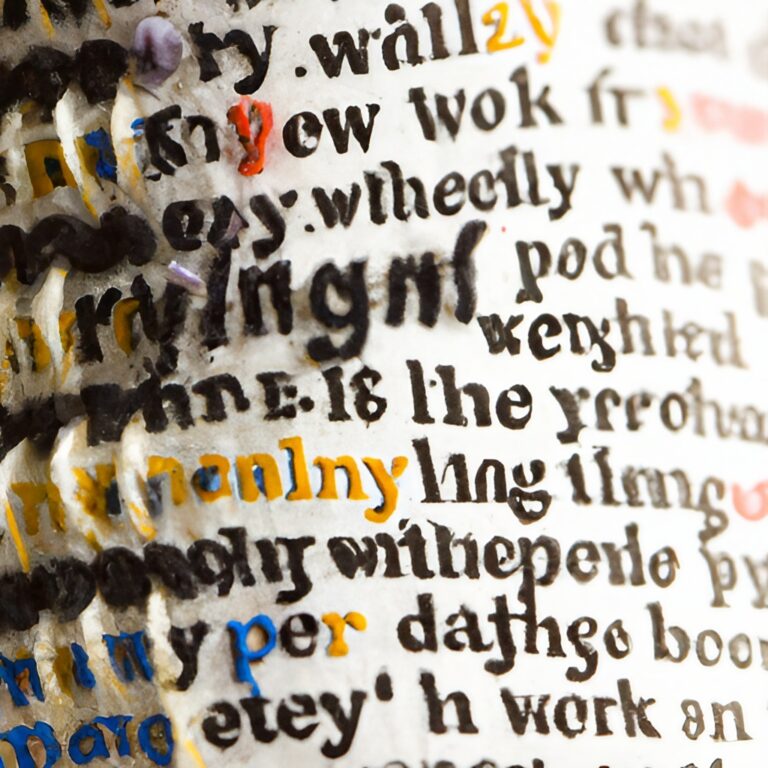
To better support and care for individuals with Autism Spectrum Disorder (ASD), it’s important to understand the key autism terms and definitions. Whether you’re a parent, friend, family member, or a professional working with individuals with ASD, having a clear understanding of these terms will help you comprehend the unique challenges and strengths of those on the spectrum. Being informed and educated about autism terms and definitions will allow you to communicate more effectively, advocate for the needs of those with ASD, and provide the best possible support to help them reach their full potential.
Autism Spectrum Disorder (ASD) – a developmental disorder that affects communication and social interaction. It is characterized by a wide range of symptoms, including difficulty with social interaction, communication, and repetitive behaviors.
Autism Spectrum – a term used to describe the wide range of symptoms and severity of autism. It includes conditions such as autism, Asperger syndrome, and pervasive developmental disorder not otherwise specified (PDD-NOS).
Symptoms of Autism – characteristics that are commonly associated with autism, including difficulty with social interaction, communication, and repetitive behaviors. Some of the most common symptoms include difficulty with eye contact, lack of interest in social interactions, difficulty understanding social cues, and repetitive behaviors or routines.
Social Interaction – the process of interacting with others, including verbal and nonverbal communication, establishing and maintaining relationships, and understanding social cues.
Communication – the act of expressing oneself and understanding the communications of others. This includes verbal communication (speaking and listening) and nonverbal communication (body language, facial expressions, etc.).
Repetitive Behaviors – behaviors that are repeated over and over again, such as repeating certain phrases, rocking back and forth, or playing with certain objects in a specific way.
Sensory Processing Disorder (SPD) – a condition that affects the way the brain processes sensory information from the environment. This can lead to difficulty with certain types of sensory input, such as touch, sound, or light.
Speech and Language Therapy – treatment used to improve communication and language skills in individuals with autism. This may include exercises to improve speech, articulation, and language understanding.
Occupational Therapy – treatment that focuses on improving fine motor skills, coordination, and adaptive behaviors in individuals with autism. This may include exercises to improve handwriting, cutting with scissors, and dressing.
Applied Behavior Analysis (ABA) – a type of therapy that uses positive reinforcement to increase desired behaviors and decrease undesired behaviors in individuals with autism.
Early Intervention – therapy and support provided to young children with autism in order to improve their development and outcomes.
Inclusion – the practice of including individuals with disabilities in mainstream activities and settings, such as school and work.
Accommodations – adjustments made to the environment or task to make it more accessible for individuals with autism. This may include things like extra time for tests, visual aids, or special seating arrangements.
Support Group – a group of people who come together to share their experiences and provide support to each other. This may include parents of children with autism, individuals with autism, or professionals working with individuals with autism.
Neurodiversity – the concept that neurological differences, such as autism, should be accepted and respected as a natural variation in human diversity.
Note: The list is not exhaustive, and other terms that are specific to certain countries or cultures might be present. Also, some of the terms may have slightly different meaning or scope depending on the context they are used.
Here are common abbriviations used when referring to ASD.
Autism Spectrum Disorder (ASD) – a developmental disorder that affects communication and social interaction.
Asperger Syndrome (AS) – a condition on the autism spectrum that is characterized by difficulty with social interaction and communication, but with preserved language and cognitive abilities.
Pervasive Developmental Disorder Not Otherwise Specified (PDD-NOS) – a condition on the autism spectrum that does not fit the criteria for autism or Asperger syndrome but still presents with symptoms of autism.
Rett Syndrome (RS) – a rare genetic disorder that affects brain development and is characterized by symptoms similar to autism.
Childhood Disintegrative Disorder (CDD) – a rare condition characterized by a loss of previously acquired skills and symptoms similar to autism.
Social Communication Disorder (SCD) – characterized by difficulty with social interaction and communication, but with no significant delays in language development.
Sensory Processing Disorder (SPD) – a condition that affects the way the brain processes sensory information from the environment.
Applied Behavior Analysis (ABA) – a type of therapy that uses positive reinforcement to increase desired behaviors and decrease undesired behaviors in individuals with autism.
Speech and Language Therapy (SLT) – treatment used to improve communication and language skills in individuals with autism.
Occupational Therapy (OT) – treatment that focuses on improving fine motor skills, coordination, and adaptive behaviors in individuals with autism.
Developmental Delay (DD) – a condition characterized by delays in reaching developmental milestones.
Intellectual Disability (ID) – a condition characterized by significant limitations in intellectual functioning and adaptive behaviors.
Global Developmental Delay (GDD) – a condition characterized by delays in multiple areas of development, including cognitive, motor, and social development.
Fragile X Syndrome (FXS) – a genetic disorder that can cause symptoms similar to autism.
Attention-Deficit Hyperactivity Disorder (ADHD) – a condition characterized by inattention, hyperactivity, and impulsivity.
Note: This list is not exhaustive, and there may be other conditions or disorders that are related to autism or have overlapping symptoms, and the meaning of the abbreviations may vary in different contexts.
Having a clear understanding of autism terms and definitions can help you to better understand the unique challenges and strengths of those who are on the spectrum. Whether you are a parent, a friend, a family member, or a professional working with individuals with ASD, this knowledge can help you to communicate more effectively with others and to advocate for the needs of those with ASD. By being informed and educated about ASD, you can provide the best possible support to those you care about and help them to reach their full potential.
If you or someone you know has a loved one with ASD, we encourage you to continue learning about the condition and how it affects those who are on the spectrum. Additionally, consider joining a support group to connect with others who have similar experiences and to learn more about resources and strategies that can help. Finally, remember that everyone with ASD is unique, and there is no one-size-fits-all approach to supporting them. By being open-minded, patient, and supportive, you can help to create a world that is more understanding and accepting of neurodiversity.
Have you ever struggled to understand autism terms and definitions or other related abbreviations? How did you go about learning more about it?
In your experience, have you found that using specific autism-related terminology has been helpful in communicating with others about the disorder?
Let us know your thoughts in the comments!
Similar Articles

Autism and Time Perception: Understanding the Time Warp
One of the most fascinating and unique aspects of autism is the way that many individuals on the spectrum perceive time. Autism and time perception

ASD Diagnosis in Adulthood: Understanding the Unexpected Realities
Autism Spectrum Disorder (ASD) is a neurodevelopmental condition that affects social interaction, communication, and behavior. Although autism is typically diagnosed in childhood, many individuals with

10 Common Autism Stims: Understanding Self-Stimulatory Behavior
Common Autism Stims: Understanding Stimming Behaviors Stimming, short for self-stimulatory behavior, is a term used to describe repetitive actions or movements that some individuals with








